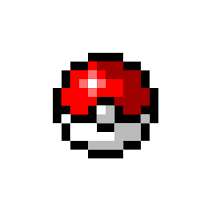"Optimal Movesets v2.1"
#PokemonGO: This is an extension of my previous post and I use the same methodology there! This post brings in some added assumptions which I will list below along with some reiteration of the previous post.Results First, then methodolgy/assumptionsHere is the analysisThe sheet works roughly like the old one but I've taken out the graphs since they don't work in sheets and aren't needed to see a good summary of the results. If you want to know what divergence analysis is and what it looks like, I suggest looking at the old sheet linked lower in the post.Methodology and AnalysisWhat's new in this post?I've added a comparison across speciesI've added all movesets so you can see just how much better the best moveset is over anotherI did this by getting the overall slope by plotting out until there was zero leftover energy (see what is meant by leftover energy under the Method section below). Then I was able to get a picture of how much divergence there was comparatively.New AssumptionsNot really new, but I want to reiterate that the assumptions on defense are faulty. We don't know exactly how the AI battles on defense. All I've assumed is that there are 2s between attacks. Also, I've assumed either no dodging or that all attacks are equally easy to dodge (which is untrue). So if you want analysis that is rock solid, just look at the Atk analysis and take the defensive and overall analysis with a big grain of saltThe slope in the spreadsheet on the results tab is proportional to the average DPS. To get the average DPS, you would need to take the slope, divide by your Stam and Def and 2 times your opponents defense stat.I've assumed 12.5 IVs across the board. I know you can't get half IVs, but it seemed close to an average of what people were keeping for pokemon they would battle in a gym with. It is also the expected value of an egg hatched pokemon once you are over level 20, so it served as a convenient number.Old/Base AnalysisInstructionsFirst off I want to thank /u/professor_kukui that provided the spreadsheet that started me off so I did not start from scratch. Here is what I made the spreadsheet into. It is not perfectly user friendly and I'm sure someone else could have made it better but here are some instructions on how you might use it.Download the excel file, it won't work in your browser, I know, that sucks.In either the 'Dmg over Time (Offense)' sheet, in A1 pick a pokemon from the drop-down menu. If you do this on the Defense sheet, it will screw things up so make sure you are on the Offense sheet.Below you will see how damage is dealt over time for each of the six possible movesets. You can go to the defense sheet and see that same thing there but for defense. You can also see all six movesets on a graph in two of the other sheets.At the bottom of the damage profile, there is a series of divergence tests. It will say YES under a moveset if an optimal moveset emerges, and NO if not. There is one for offense and one for overall on the offense sheet and one for defense and the same one for overall on the defense sheet. Overall, just takes the average of the offense and defense (weighting them equally).The MethodWhy do you have it plotted out so far? Why not 100 seconds like the good Professor's sheet?Here is an example. As you notice the blue moveset is better for the majority of time, but for a split second right at 100s the orange jumps above, this gives the impression that the orange moveset is better if you just look at 100s. If we extend the graphs until they aren't jumping over each other, it becomes easier to see which one has a larger slope (ie more of an upward trend). This is why I am using divergence analysisBasically that is the method, plot the damage profiles over a large amount of time and see which one has the largest upward trend after they stop jumping each other.Okay, that's a little improvement, but that is trivial, any other reason I should look at this rather than previous work?By plotting the damage over time, I am able to look at and take into account left-over energy after a charge move is used. In previous analysis, it assumed that if had a charge attach that generated 12 energy each time, you had to use it 5 times before firing of a charge move that costs 50. However, this is incorrect thinking after the first cycle. In the second cycle you will start with 10 energy left over and only need to use your quick attack 4 times to fire off another charge move.AssumptionsFirst on offense, I am assuming a perfect weave, with no time between attacks and that you use your charge moves in perfect synchronicity.On defense, I am assuming that the computer waits 2s between every action. Other than that they weave like a human player would have to (There is evidence that this is false, but it is the best we have for now.I have factored in STAB and Critical hit chance and assumed a critical damage bonus of 0.5.For the 'overall' best moveset, I have weighted offense and defense equally and basically vertically averaged together their graphs to find where they diverge. This is the best way to normalize and compare between offense and defense in my opinion, and to my knowledge hasn't been done up to this point.Enjoy and feel free to discuss and use freely!EDIT:Thanks to /u/Lasanchi for this easily readable pdf: PDF via /r/TheSilphRoad http://ift.tt/2aTtpIA
"Optimal Movesets v2.1"
!["Optimal Movesets v2.1"]() Reviewed by The Pokémonger
on
04:38
Rating:
Reviewed by The Pokémonger
on
04:38
Rating:


No comments